I’ve got an image blog now. It’s weird crap I have saved from the web over the years mixed with weird crap I encounter on the web day to day. Updated daily!

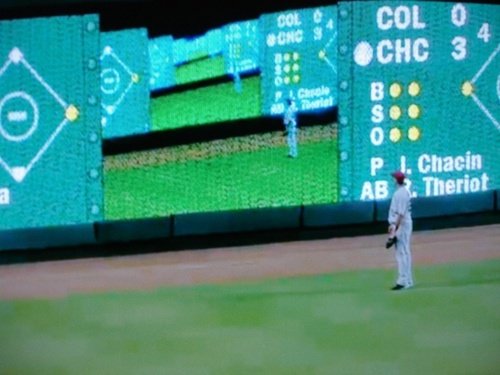

I’ve got an image blog now. It’s weird crap I have saved from the web over the years mixed with weird crap I encounter on the web day to day. Updated daily!



Here’s some amusing, interesting, insightful, or useful internet stuff I discovered in February, March, and April of 2017.
Yeltsin Drunk. In His Underwear. Hailing a Cab.
politico.com/blogs/on-congress/2009/09/yeltsin-drunk-in-his-underwear-hailing-a-cab-021553
To begin, here’s a short but interesting article. The information within comes from secret interviews conducted with Bill Clinton at the end of his administration. The article contains two amusing anecdotes regarding former Russian president Boris Yeltsin, who was found in the middle of the night on the street in Washington DC, in his underwear, drunkenly hailing a cab. He just wanted a late-night pizza.
King of the Hill Animation Rules
As an avid King of the Hill fan, I find these slides fascinating. They are a small selection of the rules and guidelines with which animators worked to keep the show consistent. These are little details the average person will never notice, but they add up to a consistent final product that is very cohesive and, in this case, realistic.
These types of decisions add up. A focus on realism suits the point of the show as a whole. Mike Judge wanted everything like textures, perspective, and windows to be sensible. To make the feel match a live action show shot on-location, the “camera” perspectives are set as though it’s a real camera in a room, not like most cartoons or even like a set on a soundstage. They took this level of detail down to getting things like the time correct on a character’s wristwatch in every scene.
It’s a good way to work through art in general, to make rules to work by (and occasionally break them for effect). It begets a lot of creativity and a consistent end product.
These are self adhering extra frets that you can add onto your guitar in order to play music that utilizes microtones. They’re dirt cheap and are not permanent, so they allow a lot of flexibility in experimentation. They can be used to add a very eastern flavor to a person’s guitar playing, as these intervals are traditionally found in forms of Indian, Turkish, and Persian music, among others.
24edo on a 12edo Guitar
sevenstring.org/forum/showthread.php?t=161530
And to further solidify that I am interested in the possibilities of microtonal composition (if 6 entries on my blog so far regarding microtonality didn’t give it away), we have a forum post where someone came up with a method of playing 24edo on a standard guitar without requiring any modifications.
I’ve been very interested in 24edo since I first heard Jute Gyte’s Perdurance. Jute Gyte utilizes guitars with double the normal amount of frets, with an extra fret added exactly halfway between each existing fret. As far as I know, there’s only one luthier out there who makes these necks with any regularity: Ron Sword of Metatonal Music. The problem is that the price is too high for someone who is merely looking to briefly dabble with the idea. This is a good solution for those people.
The system proposed in the forum post is simple and elegant. Instead of tuning the guitar’s strings fourths apart like in standard tuning, the strings are instead tuned half-fifths apart. This interval is also known as a “neutral third.” This is the note 50 cents between the minor and major thirds that most musicians are familiar with. This interval is not available in a conventional tuning. It allows for some interesting tonal possibilities.
Things Full of Beans that Shouldn’t Be Full of Beans
An art project that answers a question everyone has asked at one point or another: “What if life was packed to the brim with beans?‘
Ryan Lockwood – Streets Agent 1:12
[Video contains strong language. If you are at work or around children, you probably won’t want to play this video.]
This is a classic YouTube video that I just rediscovered. For those unfamiliar with speedrunning, the idea is to beat a game or certain level of a game as quickly as possible. There are huge online communities where people obsess over every minute detail of specific (often decades-old) games, trying to figure out strategies (“strats”) to improve current world-record times. It can take many years of dedicated study and practice to improve a world record time by one single second. From the YouTube description:
Ryan Lockwood’s narrated replay of his record-tying 1:12 Streets Agent run with subtitles. He’s narrating his run over stream to a 50+ audience, shortly after achieving it. It was the first time he or anyone else watched the run.
Hundreds know Ryan Lookwood from his Twitch stream; dozens others have met him at our annual meetup. There are a lot of, um… idiosyncratic dudes that take to speedrunning, and Ryan Lockwood is no exception. He’s an intense dude, in short.
Ryan is the second person to achieve the time of 1:12 on this level. Normally record ties aren’t big news, but Ryan hit this time before getting 1:13. This is absurdly unlikely. 1:12 is one of the most frame-for-frame maxed times in GoldenEye, first accomplished by Marc Rützou in 2012, a player whose [sic] made a name for grinding hard to break/set records that are daunting to match. With 20+ people sharing the old record of 1:13 in early 2012, the prospect of 1:12 was a popular debate in the forums. A $100 bounty was posted for anyone who could get this time–legitimately–and after weeks of attempts, Marc won the “race”. Only a few have shown serious intentions (or even interest) in matching the feat since. Technically, Ryan isn’t among them, as 1:13 was his goal. But you’ll see in the video that he had a good sense of what was on the line toward the end of his run.
The nuances of “modern” Goldeneye speedrunning may be hard to detect, but the novelty of this run’s unlikeliness should not be. A 1:14 run Streets is probably a 1 in 20 event, with respect to Lockwood’s ability. A 1:13 absolutely requires something random (see: RNG) — the presence of a grenade launcher guard. Let’s call 1:13 a 1 in 500 event. A 1:12 run leans on “RNG factors” even more, also requiring at least 3 “boosts” from gunfire (getting shot in the pack [sic], pushing you ahead slightly). Let’s suppose 1 in 10,000 odds for 1:12, in which case you can probably expect dozens of 1:13 runs before achieving 1:12. Think of this like a statistical outlier in a distribution plot — perhaps a few hundred data points between 74.0 and 75.0 seconds, thousands between 74.0 an [sic] 76.0, and one 72.9.
[Written by Derek Clark]
More information about this feat and just why this guy was so pumped can be found in this video.
Here’s some amusing, interesting, insightful, or useful internet stuff I discovered in January of 2017.

This article focuses on three avant garde artists who pioneered the idea of using CDs and CD players as instruments in their own right. Each of the artists has their own distinct approach to the idea. It is a solidly-written, long-form article that provides good historical context and that also functions as a jumping off point for further discovery. Most of this month’s Internet Roundup entries were discovered as a chain, one leading to the next; that process began with this article.
Turning the audio transmission device into an art generation tool is a musical tradition that has a rich history in our culture. There are many ways in which artists have subverted the intended use of a playback medium. Most musicians are familiar with the use of reel-to-reel tape players in this way, either as delay units or loop players. The turntable also has ended up being used in a similar creative manner as both a sampler and as a lead instrument via the familiar technique of scratching. These sounds have become a well-known part of our musical milieu. But using the CD player in the same way has never reached the same ubiquity.
I really like this kind of outside-the-box thinking. While not directly addressing this topic, this article raises questions about the untapped sonic possibilities in our current mediums: MP3s and streaming services. Is there a way to utilize these devices and services as musical instruments in their own right? Are there undiscovered sounds lurking in the structure of digital music playback that are interesting and usable? I would bet that there are.
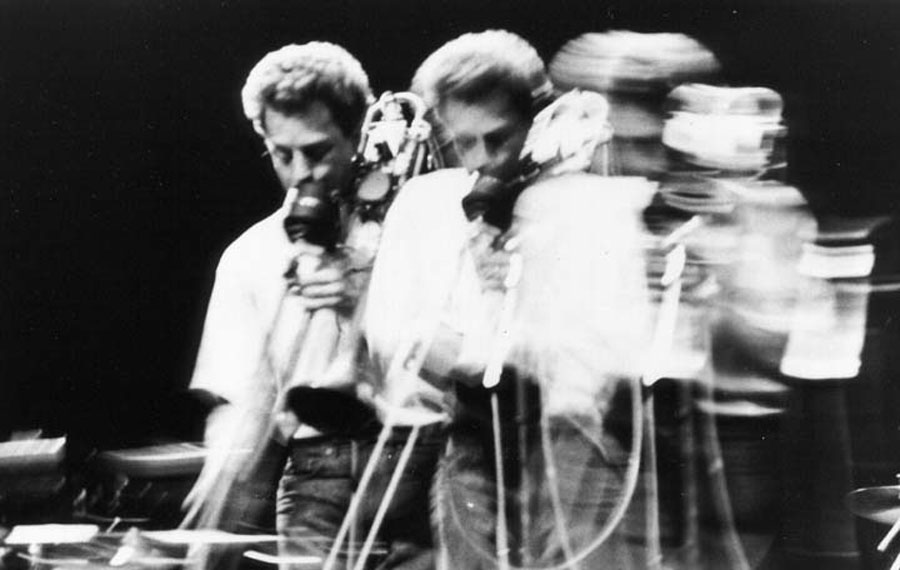
Nicolas Collins
nicolascollins.com
Nicolas Collins is featured in the above article from Soundfly due to his extensive usage of CD players as musical instruments. An interesting essay on his personal website about his CD-based works is referenced in the piece. Following that link exposed me to the rest of his body of work.
Collins is an experimental musician who is heavily influenced by John Cage and Alvin Lucier. Much of his work is electroacoustic, exploring the relationship of sound and space. He is very interested in creating works that question common, basic assumptions about music, and especially how those assumptions can be bent or broken. His work also often focuses on technology and how it can be built or modified to explore new musical possibilities.
As would be expected on a musician’s homepage, his site contains recordings of his pieces and his albums. Additionally, however, he makes available books and essays that he has written on practical and philosophical art topics. I appreciate when artists go into depth about the thought processes behind their works. Those discussions often bring about new, related ideas that can be explored. Beyond audio and writing, Collins also provides guides for making microphones and sound generators, as well as instructions on designing or bending circuits. Lastly, the site hosts many of his non-traditional scores, as well as custom software for performing some of these unique works. Collins has played with a lot of interesting ideas over the years and his catalog is inspiring in its creative breadth.

Joo Won Park is a composer and an assistant professor of music technology at Wayne State University. I found his work through his YouTube series 100 Strange Sounds. In this collection, Park generates samples from a variety of odd sources and processes them using a program called SuperCollider. This series makes use of many curious audio generation techniques. On his personal website this theme is explored further, branching into uncommon composition techniques as well.
Park’s work features non-traditional scores that often feature improvisational components. Some aspects of his compositions are generative. Many of his pieces feature a computer, often running digital sound manipulation algorithms that Park designed. One such composition, Control Click (dubbed a “piece for computer lab”) networks more than a dozen computers together. Each individual device performs a monophonic melody. All of them come together to create a generative audio-visual experience. As another example of something unique Park has done, in another performance he played a no-input mixer on an open-top bus as it drove through the city, interacting with the city as the artist and audience passed it by.
Park maintains a blog where he catalogs his works and also occasionally posts about software and fellow musicians that interest him.
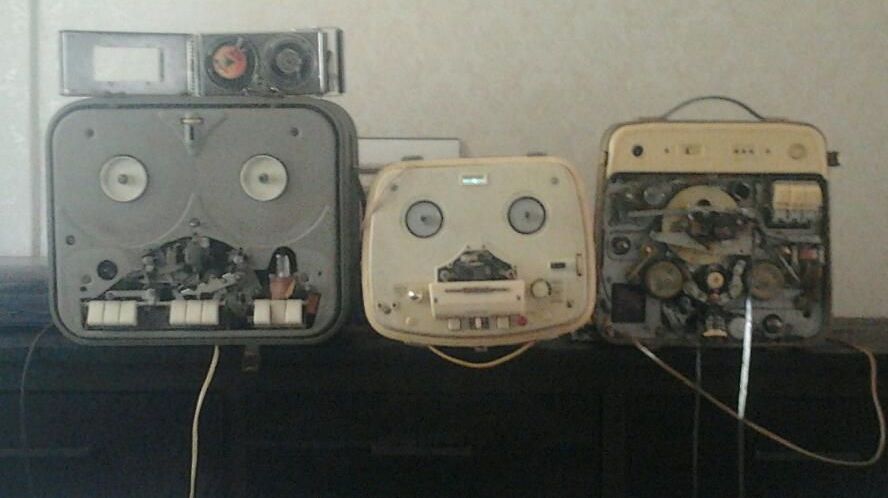
Wouter Van Veldhoven
www.youtube.com/user/woutervanveldhoven
Wouter Van Veldhoven is a Dutch based experimental artist whose medium is difficult to define. His YouTube channel is a showcase of his studio experiments, most of which include him chaining together dozens of components to create automated compositions. His work crosses the boundaries between electronic and acoustic, installation piece and music composition, robotics and art.
For me personally, ambient music is usually a genre of little interest. These compositions, however, manage to be truly fascinating. Van Veldhoven uses secondhand materials driven by an analog Doepfer sequencer and many, many reel to reel decks to bring his studio to life. He has a real passion for experimenting with old tape recorders. His compositions utilize classic tape based techniques, like creating loops and delays, but then he often gets radically more creative with his patching. One example of a more advanced technique he uses is to rig up one single loop of tape through multiple reel to reel decks. Another is to use his Doepfer to automatically reverse the playback of a tape in real time, creating unique effects.
He is not afraid of using all sorts of odd things as automated musical devices. This includes televisions, radios, miscellaneous broken machines, sine wave generators, cassette decks, solenoids, and an array of modified self-playing instruments like the reed organ, zither, and toy piano. Robot-based music is often gimmicky, but Van Veldhoven’s compositions are genuinely haunting and beautiful.
Utilizing tape so heavily as part of his production process imparts a lo-fi, nostalgic quality onto the sound of the pieces. The dropouts along with the wow and flutter somehow abstractly communicate that Van Veldhoven’s living studio is a wise old soul.
He has albums available at woutervanveldhoven.bandcamp.com, and he maintains a blog at woutervanveldhoven.tumblr.com.

Mystery Circuits
mysterycircuits.com
Van Veldhoven’s monophonic cassette Mellotron made me wonder if anyone had used a bunch of cassette decks wired together to make a made a polyphonic Mellotron. A quick Google revealed that indeed, someone had.
That individual is Mike Walters of North Carolina. He’s a keyboardist and electronic instrument technician who designs his own creations during his free time. He then catalogs and writes about his instruments. On the site you can find oddities such as a drum machine where the snare is constructed of live radio waves, the aforementioned polyphonic cassette Mellotron, a repurposed and rehoused Italian auto-accompaniment machine, and much more. Quite a few of the devices on the site have audio and video samples, explanations of how the devices are played, and explanations of how they were built and how the circuits work.

Acreil
www.youtube.com/user/acreil
My discovery of Acreil’s work also came about through further exploration of Van Veldhoven’s ideas. I was fascinated by his Doepfer sequencer and wanted to see if such a thing existed within the digital realm. That was when I found the program known as Pure Data and, subsequently, the experimental algorithmic compositions of Acreil.
In a Pure Data algorithmic composition, the composer creates a program that consists of a series of rules, math equations, and logic gates. These are known as “objects” in Pure Data. The various objects interact with one another in ways determined by the composer, eventually leading to a device that generates musical notes. These notes can be played using oscillators (which generate simple waveforms or white noise) or MIDI (which allows you to connect to virtual instruments in a DAW like Pro Tools). These waveforms come together to create a piece of music. The composer can write the program so that the music is unique on every playthrough, or so that it is the same every time, depending on how they orient their objects.
Out of the catalog of Pure Data algorithmic compositions, Acreil’s work is noteworthy for three reasons. Firstly, most Pure Data musicians that I have encountered either make ambient songs or outright noise pieces. Acreil seems to be one of the few who creates actual rhythmic compositions with drums. Secondly, he has experimented quite a bit with microtonal composition. While many microtonal pieces sound very dissonant, his sound quite consonant. Lastly, while Pure Data can be connected to a DAW like Pro Tools to utilize virtual instruments, Acreil uses the sound generators in Pure Data exclusively. The sounds he achieves are very complex, so his setups for each individual instrument in his compositions must be quite advanced.
My piece Key West, composed in January, is directly inspired by Acreil’s work. It uses Pure Data, a microtonal tuning, and only sounds generated within Pure Data. I intend to write more using this composition method in the future.
Acriel’s work can be found on YouTube and his longer albums can be found on Bandcamp. The other focus of his YouTube channel is demonstrating the capabilities of individual keyboards by composing songs that only utilize patches from the keyboard in question. While they are much less experimental, these end up being enjoyable compositions in their own right.

All the Scales
allthescales.org
Being generous, we tend to use roughly twenty different scales in Western music. In reality, however, most the music we hear utilizes a paltry two of those, Major and Minor. That fact gets sadder: those two scales contain all the same intervals! The only difference is the degree on which the scale begins.
William Zeitler took the time to catalog every possible scale within the 12-tone system that repeats at the octave and that does not contain a jump of more than 3 semitones. He determined that there are 1,490 different scales that can be made from these parameters, each with its own set of modes. Not being content with merely pointing out the existence of this wealth of scales, he also created MIDI files for each one and uniquely named every single mode of every scale.
These scales can be utilized within the chord-scale system, or they can be used as a starting point for composition. Many microtonalists complain that the chromatic system is too limited, but this website shows that even within the limited 12-tone system there is a huge amount of musical territory left to explore. (Not that that should stop anyone from exploring microtonality!)

JLIAT: Silences
www.jliat.com/silence
If every full-length CD that could possibly exist was played from beginning to end in succession, the resulting audio would be longer than the amount of time from the beginning to the theorized end of the universe.
That totality is impossible to recreate in the physical universe. Within the realm of all-discs-that-could-exist, however, there is a realizable possibility: discs of silence. Due to the way that CDs read audio, there are 65,536 unique discs that would cause a player to render only silence, totaling out at 9 years of playback. The creator of this conceptual art piece, James Whitehead, put together and made available 65,536 files that render 10 seconds of each one of these unique silences (which comes out to over a week of non-sound).
The piece is reminiscent of John Cage’s groundbreaking 4’33”. The idea of quantifiably different silences is quite strange, as is the idea that all music that could ever exist is possible within a finite medium. As the artist states in the description of the download: “This poses the thought that any recording could be created by artistic talent, ingenuity, skill, sensitivity… or by brute force or accident.”

I first found this site in 2009, when it was still available at its original domain. A few years ago, I went looking for it again, only to discover that the domain had lapsed. This was greatly disappointing. After a number of attempts, a search this month on the Internet Archive finally yielded results.
As a child, I was diagnosed with inattentive ADD. The doctors who tested me concluded that it was the result of some mysterious brain defect. Unlike a “normal” person, I would be forever stuck with absent-mindedness, difficulty focusing, forgetfulness, the need to fidget, boredom, and difficult mood swings. They also diagnosed me with a significantly-lower-than-average cognitive processing speed, which is something that about 1/3 of people with ADD suffer. Despite the fact that the other testing metrics came out above average, the professionals placed the focus almost entirely on the negative results. They called it a “learning disability.”
I carried that around like a curse while growing up. Believing that I was born defective was not a healthy self-narrative and contributed (along with other things) to years of difficulty as a child and teenager. It was early 2009, at age 20, that things began to change. A good friend of mine and I were having a conversation in which I was complaining about the difficulty of being a slow ADD person in our overwhelmingly fast-paced world. This friend is a quick wit… so quick, in fact, that it would sometimes get him into trouble. Back then he had the tendency to speak before thoroughly thinking through the possible repercussions of what he was about to say. He pointed out that my introverted, calculated nature could easily be understood as a strength, as I never end up in those kinds of predicaments! He said he was jealous of my ability to always fully consider the impact of my words before speaking. My mind was blown. I had honestly never even considered that this “weakness” I had could be understood, or even utilized intentionally, as a strength.
Thus began a search of the internet for resources regarding this idea. Born to Explore was one of the first I found. Many of the ideas on the site have stuck with me to this day. There are a number of different profiles of types of people who fall under the ADD umbrella and ways to turn the normal negative interpretations of their symptoms into strengths. I believe this sort of reframing is something that can be done with many personality traits or other aspects of life that a person may be unhappy with. The Positive and Alternative Views and Positive Quotes pages were invaluable for my transformation from depressed youth into functional adult. This page also helped me realize the importance of seeking out a life which is the right fit for my mind and my own strengths and weaknesses. When I am pursuing the type of work that my mind excels at, my ADD symptoms are practically non-existent. I understand that the specifics of this story are probably of relatively limited interest to my audience, but if this archived page helps one person via this blog entry, then I will be happy.
Here’s some amusing, interesting, insightful, or useful internet stuff I discovered in December of 2016.
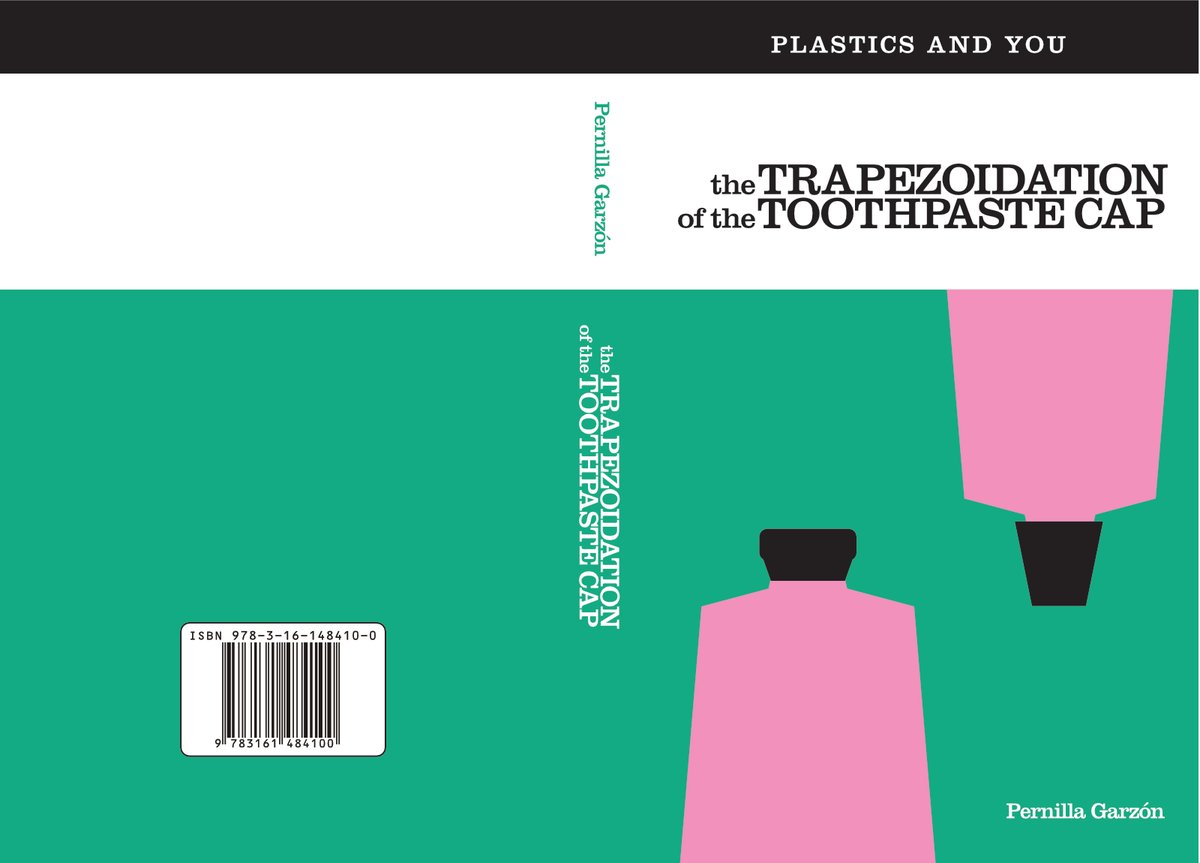
Exciting Books
twitter.com/excitingbooks
Exciting Books is the work of an anonymous Washington-based artist. This unknown person invents ridiculous fake books (and occasionally fake product wrappers) with awesome design inspired by older styles. Some of his/her works include thrillers such as: Sandwich Slice Angle and Consumer Taste Perception, Historic Culverts of Manitoba, and Fon-Don’ts: Safety Lessons from the Fondue Craze.
This is a curious and novel art form, and the artist’s passion for design comes through clearly. These books offer the viewer an amusing journey into an alternate reality, one fraught with bizarre juxtapositions and absurd specificity. In addition to the original creations posted in the blog, sometimes the artist or fans will find and post books that have titles eerily similar to ones that would be invented for the project (for example: Bread: Social, Cultural, and Agricultural Aspects of Wheaten Bread), and purportedly a lot of the titles the artist invents are later discovered to be real books already (for example: Reusing Old Graves). When taking all the posts together, one develops a sense that the world in which we live is, in actuality, just as ridiculous as the imaginary one invented by the artist.
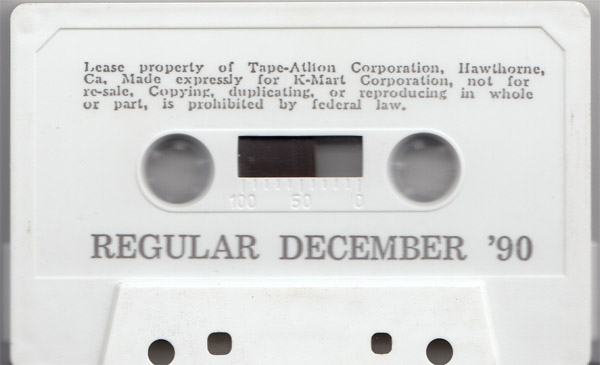
Attention K-Mart Shoppers
archive.org/details/attentionkmartshoppers
Archivist Mark Davis says, “this is a strange collection,” and he’s right. As most stores do, in the late 80’s and early 90’s, K-Mart played in-store background music for shoppers. As this was the time before satellite radio, this was done via the medium of cassette, with the tapes being replaced by new ones on a set schedule. When they updated the tapes, the old ones were simply thrown in the garbage. Mr. Davis had the foresight to save his store’s tapes from the dump.
The tapes are a time capsule, a window into the past. The recordings are most interesting pre-1991; later tapes are just regular mainstream radio songs which can easily be found elsewhere. But the earlier tapes contain original muzak, the type one would only experience in particular situations like a shopping mall in 1990. The songs are reminiscent of simpler times, when absent-minded American consumerism was at its height and 9/11 was still over a decade away. In addition to a sense of cultural nostalgia, the archiving project as a whole invites the listener into Davis’s personal nostalgia for the time period. While browsing the digitizations, it becomes clear that this time period was something special to him, and we get a little taste of that experience as well.
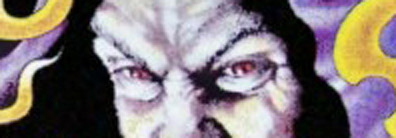
Is Death Certain?
isdeathcertain.com
This page is short but sweet… a poignant exploration of a simple fact / a universal human mystery.

Reality Sandwich
realitysandwich.com
Reality Sandwich is an online magazine devoted to the “new wave of consciousness culture.” They cover topics including philosophy, psychology, ecology, technology, art, and more. The site is nearly 10 years old, so it has a large selection of content to explore. They are one of the few sites of this type that actively encourages user submissions and frequently publishes user-created pieces.
Some of the content on this site is, in my opinion, too far out there. But then other content is actually quite brilliant. I see no reason to throw out the baby with the bathwater. The site is fairly non-dogmatic and open to different ways of thinking. I find the Psyche section the most interesting, as it focuses primarily on consciousness studies, but the Art section also contains pieces that I find intriguing as well.
I discovered this site through the article How I Freed My Mind from the Cult of Materialism. I’ve long thought the “default” philosophy of mind in our society, physicalism (there is only matter and mind is merely an illusion created by it), makes no sense. Despite the multitude of evidence within the apparent physical world that points in that direction, the basic, directly-accessible truth is that we only ever directly access mind. Objective physical reality can never be known directly and to take it as “real” is purely an act of faith. To completely reject consciousness, the only truth we ever know, is an act of mental gymnastics.
While researching the same topic, I also came across this article, The Case Against Reality, from The Atlantic. Both are excellent reads.

I arrived at The Sync Book while indulging in a pastime I enjoy, researching insane conspiracy theories. In this case, I was watching YouTube videos about the more outlandish interpretations of The Mandela Effect (we are jumping between alternate realities, reality is a simulation like in The Matrix, the CIA is performing memory experiments on the public, and so forth). One video that appeared in the sidebar was Back to the Future Predicts 9/11, which looked way too entertaining to pass up. Down the rabbit hole I went.
What struck me about this video as opposed to similar others was its opening screen. Here is an excerpt of what is found in its Ignotum per Ignotius:
“the insinuations in this piece are… not proposed as evidence of an intentional conspiracy by the Back to the Future film makers… this piece is not attempting to implicate specific individuals for having foreknowledge of the attacks of September 11th… this is an exploration… the correlations uncovered are meant to indicate a conscious connective fabric that ties together all matter and energy within the universe, producing non-local phenomenon which can be referred to as synchronicity. As this fabric is observed by the characters it chronicles, their own stories will appear to reflect the fabric itself…” [emphasis in the original]
This is a far more intriguing idea than how the majority of viewers interpreted the video (based on the comments section: Robert Zemeckis is part of 9/11, it was a false flag attack, Hollywood is a wing of the CIA’s MKUltra project, etc.).
Psychologist and mystic Carl Jung’s concept of synchronicity, “the coming together of inner and outer events in a way that cannot be explained by cause and effect and that is meaningful to the observer,” has always fascinated me. Everything that happens in the universe is, logically, the result of the underlying nature of the universe. Meaningful coincidences can be understood to represent that underlying nature in some way. If all things are aspects of one underlying nature, then similar representations of that singularity will arise in non-connected ways. It’s pretty entertaining to apply this idea to something as out-there as the connections between a classic 1980s adventure film and the most important historical event of our era.
Upon further digging, I discovered that the creator of this video is part of the larger project known as The Sync Book, which is an organization dedicated to exploration of this understanding of “synchromysticism.” They produce podcasts, books, and events dedicated to “exploring synchronicity at the intersection of myths, magic, media, and mindscapes.” They also examine “esoterica, high-weirdness, art, philosophy, science, politics, and spirituality.” There is a wealth of interesting content on the site to explore.

Replication Issues in Various Branches of Science
Psychology and brain science are currently facing replication crises. fMRI testing was recently demonstrated to be faulty, with some methods generating false positives as high as 70%: A Bug in fMRI Software Could Invalidate 15 Years of Brain Research. As the article states, this “could invalidate the results of some 40,000 papers… That’s massive, because functional magnetic resonance imaging (fMRI) is one of the best tools we have to measure brain activity, and if it’s flawed, it means all those conclusions about what our brains look like during things like exercise, gaming, love, and drug addiction are wrong.”
Additionally, a massive psychology replication study in 2015 determined that half of the studies they attempted to replicate were not necessarily sound: A Huge Study Found Less than Half of Psychology Findings Were Reproducible. This could be the result of unrecognized, uncontrolled variables in the original studies, or in some cases it could be the result of researchers attempting to make their data look more interesting or noteworthy than it really is. Regardless, we should learn to always take these new findings with a grain of salt until they are well-understood and reproducible.
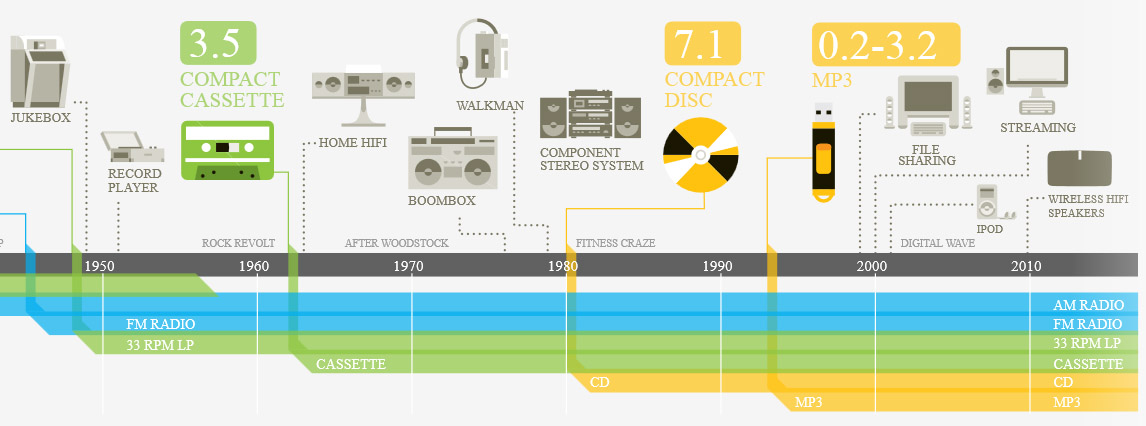
The Atlantic – All Ears
theatlantic.com/sponsored/sonos-2016/all-ears/1166
This article from Sonos and The Atlantic touches on a lot of issues with the way that mainstream culture currently consumes music. Clearly, this piece is designed to function as an advertisement for Sonos products, but if you look past that there’s a lot of interesting information within. The following thoughts are what came to my mind while reading the article:
Music’s ubiquity and uniformity has bred complacency and boredom. It’s everywhere all the time, used as white noise, and it’s sometimes used as a way to shut the world out. Streaming services play piece after piece and the listener usually doesn’t develop a long term connection to the music as a result. Passive listening is an anemic experience. Music listening is most impactful when it’s done as an active, participatory activity, and music is best when it is people uniquely expressing their own capabilities and understandings of sound.
Music attaches itself in the mind to the context in which it is heard. The meaning and emotional states held within a song or album are amplified by the context and commitment of the listener; the mind makes associations connecting those pieces to specific time periods and experiences in our lives. Live bands are taken more seriously by the general public than studio projects because there is a ritual involved, an experience of the creation and consumption of that music; community bonds are formed that are represented by those sounds. Most people don’t put that same kind of commitment into their digital audio collections, and almost nobody uses streaming services that way. With streaming services, no investment is necessary. Music is much more impactful when it is sought out intentionally, and when it is shared with other people in person.
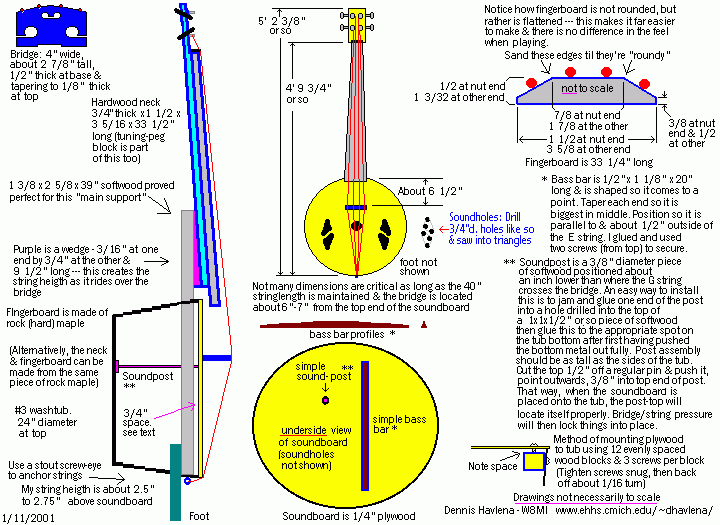
Dennis Havlena – DIY Folk Instruments
dennishavlena.com
Dennis Havlena is something of an online DIY-instrument folk hero. His name gets dropped frequently by builders all over the net. Havlena has generated his reputation by operating his website for nearly two decades, posting a multitude of detailed build instructions in the process. Over the years he’s created and shared unique plans for upright basses, guitars, banjos, harps, drums, mandolins, dulcimers, flutes, ouds, hurdy gurdies, koras, bagpipes, and xylophones, among a variety of other instruments. These designs are usually hardware-store builds that use easy-to-find and affordable components, and when built by a skilled person they actually sound great.
The site is very Web 1.0, which is endearing. The design is cluttered and takes a lot of time and dedication to dig through. Whenever I look at it, I find new content that I missed on my previous visits. Unlike many webmasters these days, Havlena is focused on producing quality content instead of flashy design and ad-revenue-generating clickbait, so his site is a breath of fresh air.

The Ghost Ship Tragedy
As a member of this underground touring music community, this is personally a difficult topic to write about. I’m going to keep it relatively short. Here are two articles that I thought were particularly noteworthy:
DIY in Crisis: Has Oakland’s Ghost Ship Fire Jeopardized the Underground?
Judgement and The Ghost Ship Tragedy: America Has Abandoned Its Artists
Firstly, everyone should be aware that /pol/ posters are actively engaging in a campaign to shut down as many music venues as they can. They claim to be doing it to shut down radical leftist breeding grounds, but most of them are really just internet trolls looking to get a rise out of people.
That said, those who are serious about shutting DIY music down can’t really succeed in that aim. Unless the government starts a straight up censorship campaign (unlikely in our country, though certainly possible, as it has happened elsewhere in the world countless times), underground musicians will just play our music and make our art somewhere else. We do this stuff because we have to. That innate drive won’t be squelched by certain venues shutting down, or house shows being less common. If anything, it just strengthens the community’s resolve to keep going.
If you host shows somewhere, please keep it as safe as possible. The Ghost Ship was really the epitome of a dangerous space and that tragedy could have been avoided with some foresight. But also, those of you who host shows: thank you so much for what you do. As someone who has helped operate DIY shows and house venues in the past, I know that it is all too often thankless. We need you now more than ever.